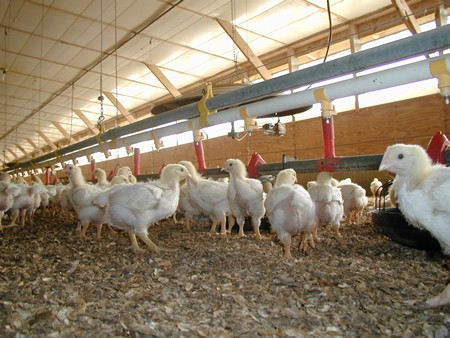Background
Plants have evolved over time in response to factors such as climate and insects. Scientific advancements have helped to speed-up this process through the genetic modification of  crops. This has helped to make food crops more tolerant of less-than-ideal terrain and climates as well as give them the ability to naturally fight pests and insects. In essence, genetic modification has enabled the agricultural industry the ability to do more with less, minimizing its impact on the environment. For example, genetic modification has made it possible to increase crop yields (providing more crops using less land); use fewer pesticides; and help utilize marginal land where crops would not have grown in the past.
crops. This has helped to make food crops more tolerant of less-than-ideal terrain and climates as well as give them the ability to naturally fight pests and insects. In essence, genetic modification has enabled the agricultural industry the ability to do more with less, minimizing its impact on the environment. For example, genetic modification has made it possible to increase crop yields (providing more crops using less land); use fewer pesticides; and help utilize marginal land where crops would not have grown in the past.
Food and food ingredients from genetically engineered plants were introduced into the U.S. food supply in the 1990’s.
As the world population quickly advances towards doubling in the year 2050, research and the advancement of food science has never been more important than it is today.
This practice also helps keep food in the United States affordable, and why we are fortunate enough to spend proportionately less of our income on food than most other countries around the world.
The following Frequently Asked Questions (FAQ’s) regarding Genetically Modified Organisms (GMO’s) are meant to share information about GMO’s and how they are used in the chicken industry today.
1) Are chickens genetically modified?
No. Chickens which are raised for meat in the U.S. benefit from a natural process of selecting and crossbreeding birds with the most desirable qualities.
2) Which ingredients in chicken feed are typically genetically modified?
Since 1996, farmers in animal agriculture, including poultry, have fed genetically modified grains (corn) and oilseeds (soybeans) to their flocks and herds, with U.S. government oversight. Since more than 80 percent of the corn and soybeans grown in the US are raised from genetically m odified seeds, almost all corn and soybean used in conventional livestock and poultry production is genetically modified. There has been no scientific evidence of any compromise to animal health whatsoever from the ingestion of genetically modified feed ingredients. In fact, since 1996, overall chicken health has improved and U.S. production has increased by 43 percent.
odified seeds, almost all corn and soybean used in conventional livestock and poultry production is genetically modified. There has been no scientific evidence of any compromise to animal health whatsoever from the ingestion of genetically modified feed ingredients. In fact, since 1996, overall chicken health has improved and U.S. production has increased by 43 percent.
3) What safeguards or regulations are put in place to ensure that feed ingredients aren’t harmful to chicken or human health?
The combined expertise of three federal agencies: the U.S. Environmental Protection Agency (EPA); the U.S. Food and Drug Administration (FDA); and the U.S. Department of Agriculture (USDA) are all responsible when it comes to approving and overseeing the use of genetically modified crops to ensure a safe food supply both for animals and human beings.
Simply put: the EPA evaluates genetically modified plants for environmental safety; the USDA evaluates whether the plant is safe to grow; and the FDA evaluates whether the plant is safe to eat.
4) What are the benefits of using genetically modified feed ingredients?
Genetically modified crops require less fertilizer and fewer pesticides, while increasing crop yields. This helps make feeding them to chickens more environmentally-friendly and results in a more sustainable food product.
5) How does the nutritional value of a chicken raised with GMO ingredients differ from one that hasn’t been fed GMO’s?
There is no nutritional difference between chicken products in which chickens have been fed genetically modified crops versus chickens that have not. Once feed is digested by the animal, there is no way to distinguish any difference.
Furthermore, there is no food safety—or any other risk—to the health and well-being of consumers when they consume chicken or other animal agriculture products (e.g. eggs, dairy), which have been raised with genetically modified feed ingredients, as demonstrated through more than 15 years of the widespread use of GMO grains in conventional agriculture. Most importantly, this position is supported by the World Health Organization (WHO).
6) Should genetically modified foods be labeled as such?
This does not apply to chicken, as chickens and chicken meat are not genetically modified.
7) Are genetically modified feed ingredients permitted in organic chicken production?
While the National Chicken Council (NCC) firmly stands behind the science regarding GMO’s and has the highest confidence in chicken products fed GMO’s, it also recognizes that not all consumers support this practice. In this case, consumers should know that those chicken products that carry the Certified Organic label, granted by USDA, have not used genetically modified feed ingredients in the raising process.
The amazing variety of chicken products today allows people to choose products that take into account many factors, including taste preference, personal values and affordability.
Consumers can eat all USDA-inspected chicken with the highest confidence knowing that their chicken is safe, wholesome and poses no risk whether or not it was fed genetically modified, conventional or organic feed ingredients.
8) Where can I get more information about GMOs?
FDA’s Questions & Answers on Food from Genetically Engineered Plants
International Food Information Council Questions & Answers about Food Biotechnology
Best Food Facts Q&A Video Series about GMOs
FDA’s Role in Regulating Safety of GE Foods



